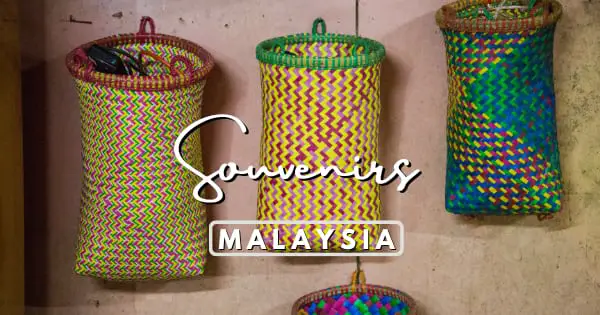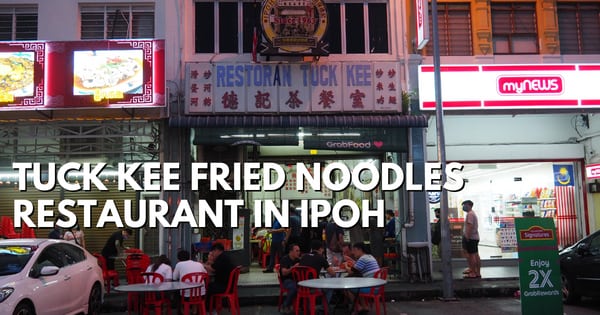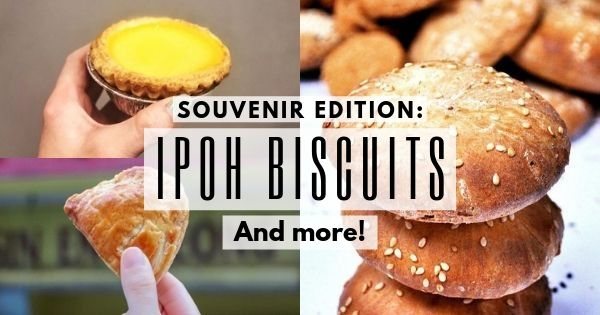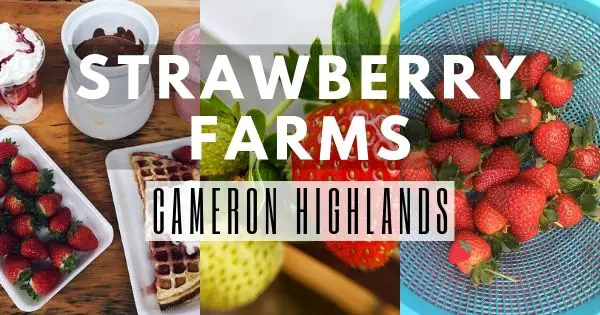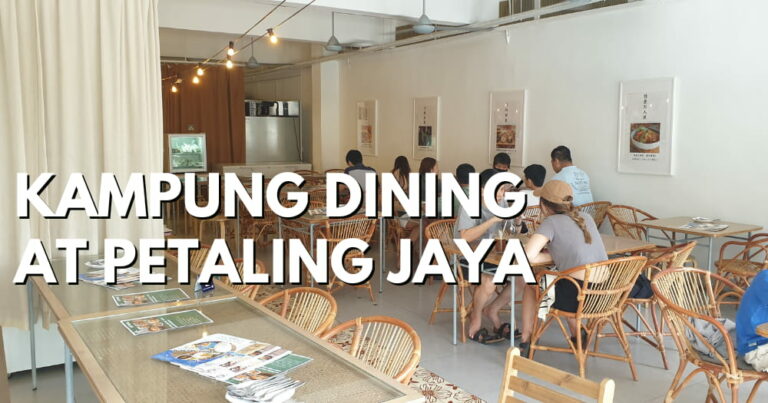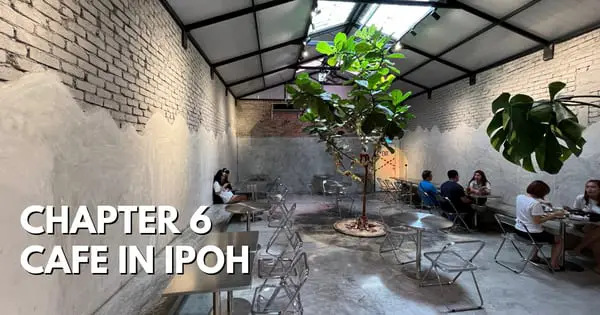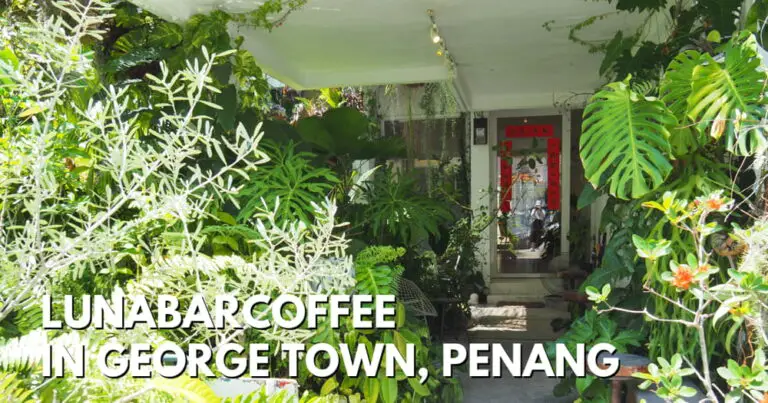Whether you need to get a quick souvenir or intend to bring back something extra special, there is no lack of interesting Malaysian-made goods that you choose from.
Some can even be found at the airport but there are many artisans all over the country too.
Here’s what we think would be a unique gift to loved ones (yourself included) that will remind you of your time in Malaysia!
21 Top Malaysia Souvenirs
With the tight restrictions on what you can take onboard a flight, we’ll keep food out of this list for the most part. Most traditional Malaysian food use fresh coconut milk too (i.e., expires quickly).
Plus, depending on where you’re from, there’s a high chance that you can find edible Malaysian products (e.g., sauces, snacks, pastries, desserts) at an Asian mart.
Instead, we will focus on handicrafts and other goods that you look for instead. Many are traditional but we have included some more contemporary options too!
Malaysia Traditional Souvenirs
Some of these are bulky (and fragile) so make sure you have check in luggage if you would like to bring the bigger items back.
1. Sumpit
These are blowpipes made by the indigenous people of Malaysia (known as the orang asli). Sumpit are traditional weapons with poison-tipped darts used for hunting birds and monkeys.
And therefore, it can be tricky to find them for sale. Some airports might not allow you to bring them onboard either.
2. Songket
The name songket refers to the handwoven fabric with interwoven silver or gold thread – traditionally woven by Malay women in West Malaysia as well as Sarawak.
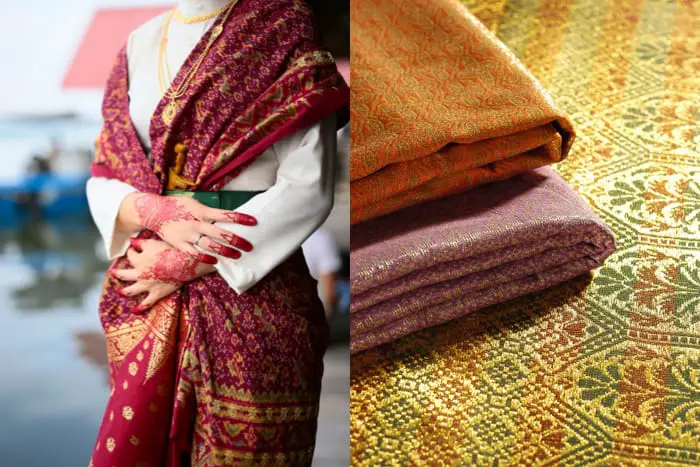
There are many possible patterns but songket is usually worn for formal and ceremonial occasions together with other traditional Malaysian attire associated with the Malay race like the baju melayu or baju kebaya.
Songket can be found in many states across Malaysia. Textile shops will sell the material but there are also songket specialty shops as well.
3. Minyak Gamat
Sea cucumber oil or minyak gamat is believed by locals to have beneficial properties. It is used in massages to relieve joint and muscle pains alike.
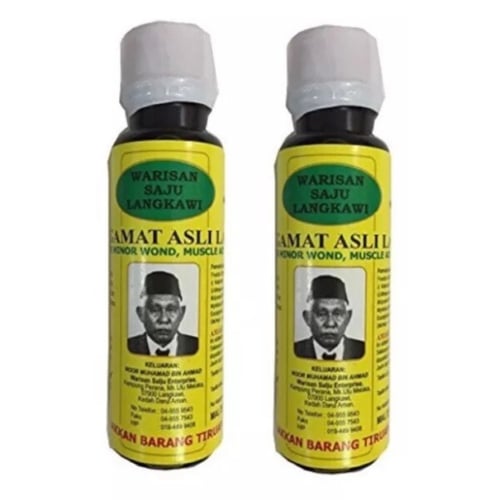
Or it can be applied to insect bites and small wounds to speed up healing.
And there is scientific proof that sea cucumbers do have medicinal properties.
Langkawi is particularly famous for selling minyak gamat and you can actually buy this online on popular shopping platforms like Shopee and Lazada too.
4. Wooden Handicrafts
Wood furniture might not be the most convenient thing to take back to your home country but Malaysia has many fine hardwood furniture that are elaborately carved.
However, there are also smaller items that you can get instead – these include traditional wooden tops (or gasing), congkak boards, sape (traditional luke-like instrument), or other unique items like a wooden keris, foldable wooden bowl or basket similar to the website below:
Often though, the precise source of the wood is not disclosed and as a responsible consumer, you should be aware that illegal logging exists in Malaysia.
If you truly want to avoid supporting that practice completely, the next best thing is to buy the items second-hand on Facebook marketplace or Carousell.
On the thriving Malaysian second-hand market, there are numerous wooden mid-century and Nyonya antique furniture that are sure to be a signature piece in your home.
5. Rattan Handicrafts
The rattan trend may be just about over, but rattan handicrafts are still highly valuable because of how hard it is to harvest them.
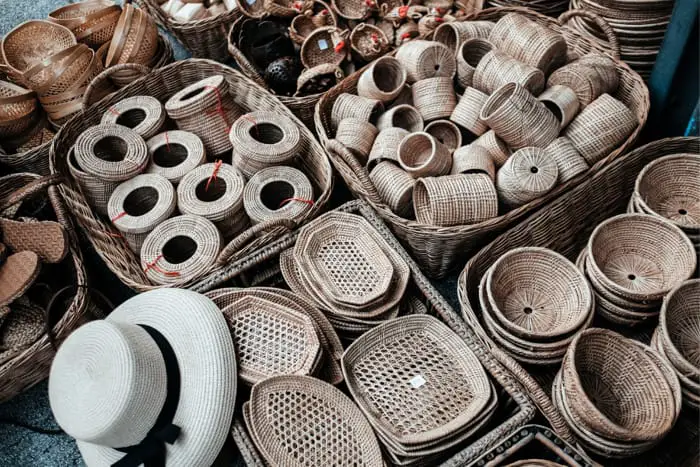
Not to mention the intensive labor and skill required to bend, shape, and weave this stiff natural material into appealing round shapes.
You can find rattan furniture in the form of chairs for adults and kids, baby chairs, stools, benches, pendant lights, armchairs, baskets, etc.
These are also commonly sold on the secondhand market too. Or you can directly support local craftsman – some have their own physical shops while others can be found on online shopping platforms like Shopee or Lazada.
6. Cucuk Sanggul
Cucuk sanggul, like songket are traditionally reserved for ceremonious occasions as these fancy hair accessories do make quite the entrance!
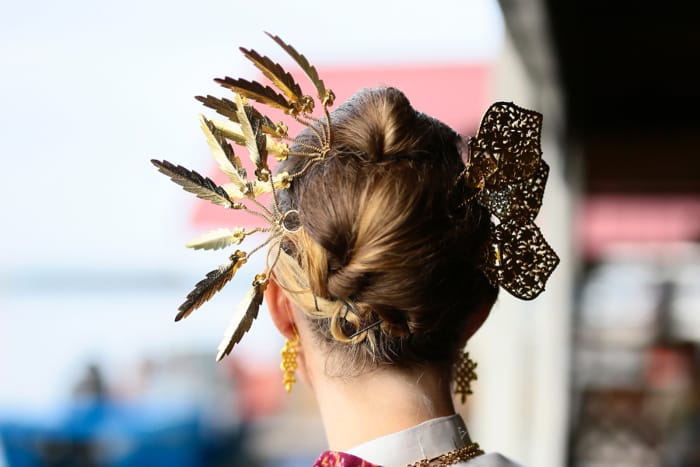
Malay bridal shops are sure to have them in stock but they can also be found online.
7. Labu Sayong
These traditional vessels were originally used for storing water though now, they have a more decorative purpose.
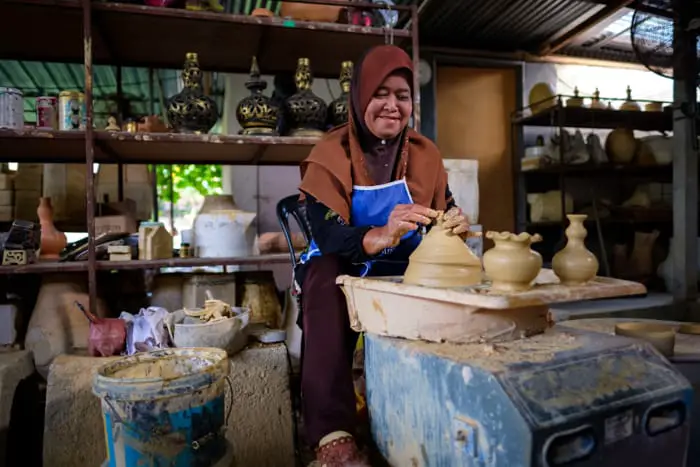
The clay pottery is shaped after pumpkins/ gourds and will usually bear carvings (made by stamping the clay with wooden stamps) of local flowers and herbs, or bamboo shoots.
There is spiritual meaning in the way the pots are shaped too. The opening, neck and main body of the pot represents different realms in Malay cosmology.
Of great renown are the labu sayong from Perak. To be more specific, the Sayong district of the royal town of Kuala Kangsar where the special clay is available.
8. Keris
Keris (or kris) can be straight or with a distinct wavy shape. And while they are traditional weapons made of iron or steel, their modern use is for ceremonial dress.
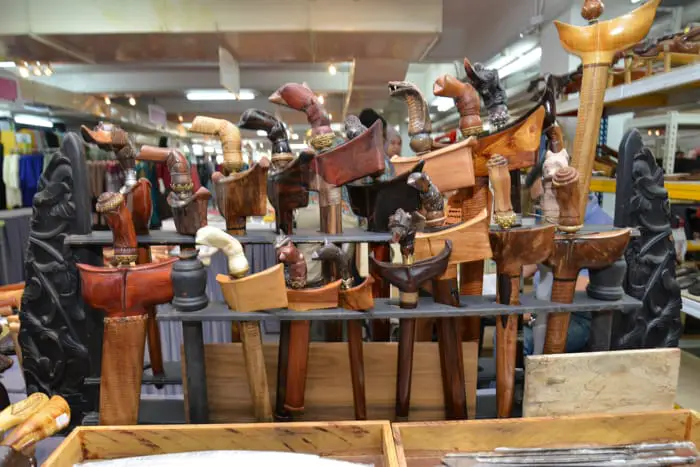
So their hilts can be extremely ornate. The size of keris can vary too. And you can even find buttons, brooches, and pins shaped like keris.
However, there are still places where you can get authentic kris although we’re not too sure that you will be able to take them back to your home country.
To be on the safe side, you might want to get a wooden keris or a tiny one.
9. Clogs (Kasut Terompah)
Malaysians might think you’re crazy for wanting to bring a pair of these simple wooden clogs (with their quintessential red bands) back to your country. As these clunky shoes are hardly ever used now in preference for rubber flats and flip flops.
But making these clogs are a vanishing art in Malaysia and very few people make them now.
Although they were once incredibly common in our grandparents’ days for doing chores outside the house or in wet areas like the bathroom.
10. Pearls (From Sabah)
Pearls of different hues are sold everywhere in Sabah as jewellery in the form of earrings, brooches, necklaces, and bracelets.
They can cost under RM100 or a few thousand depending on where you choose to buy them from.
Their high availability is due to the pearl cultivation in Sabah.
Just be sure to do some research on how to check for a genuine pearl before making a purchase. As well as the difference between the freshwater and saltwater variety.
But basically, if they’re too perfect, they’re likely fake pearls.
11. Tekat
Tekat is another traditional Malay technique (i.e. couching) used to decorate fabrics with thick gold embroidery.
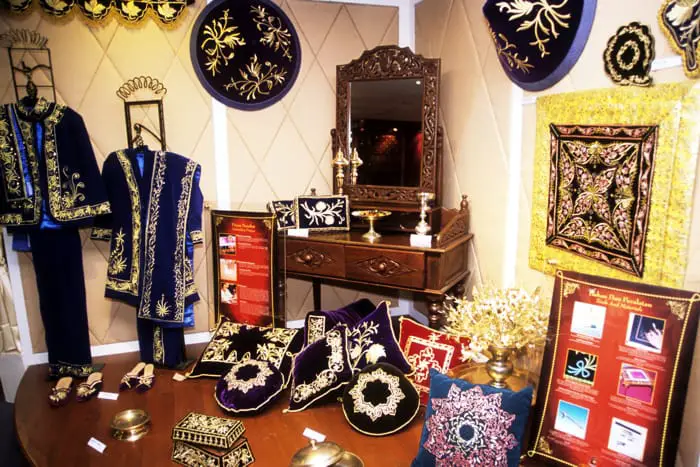
Typical styles involve flowers or arabesques. The most common use for tekat is for throw pillows and bolsters on a marriage bed.
12. Pewter
Royal Selangor is synonymous for pewter in Malaysia. They are in fact, the world’s largest retailer for pewter and are known for their quality workmanship.
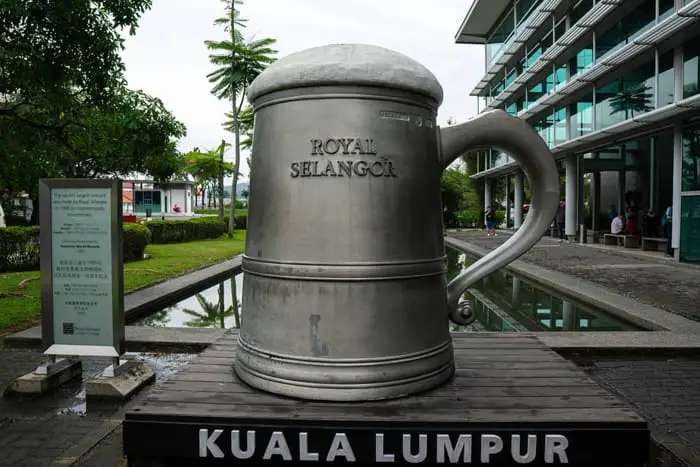
There are several branches in Kuala Lumpur and Penang and they have a huge product catalogue which includes decorative items for the home, customizations, and even movie collectibles!
13. Dodol
We want to include at least one edible dessert that you can possibly pack into your luggage.
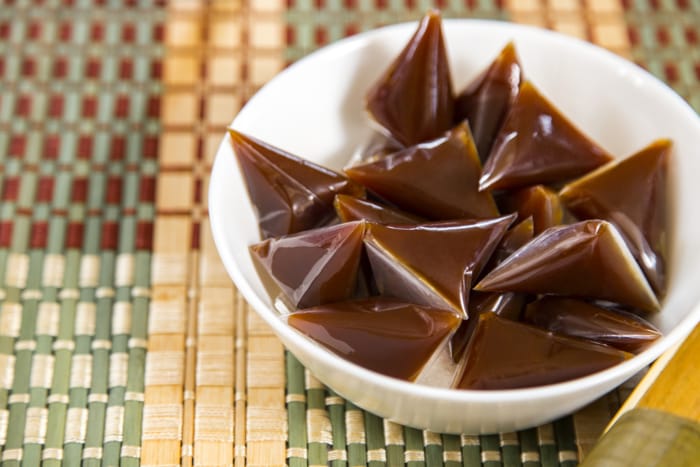
Dodol is a sweet and chewy treat made from coconut milk, glutinous rice flour, and palm sugar. It should not be hard to find dodol no matter where you are in Malaysia.
However, Melaka dodol is unique because they use less coconut milk. And if you’re feeling adventurous, you can pick up durian-flavored dodol too if it’s durian season.
14. Kerongsang
Kerongsang are brooches and are used to dress up traditional costumes and formal Malay attire in Malaysia. Classic designs commonly feature flowers.
Real gold kerongsang can cost as much as RM1,000+ while the diamond encrusted sort can sell for up to RM50,000.
The modern version of kerongsang are made of polymer clay feature cute designs that look like local desserts or popular characters. These are a lot more affordable and wearable than the traditional kerongsang.
15. Chinese Pastries
There are many different types of traditional Chinese biscuits pastries. And because they are baked goods, they are dry and can be packed like any other biscuit you can find in the supermarket.
The point of getting them in Malaysia is to take advantage of fresh batches and a wider variety (than what you might be able to find outside of Malaysia) which may also include seasonal flavors. Penang and Ipoh all have their famous shops and biscuits.
Melaka is also a good place to look for traditional biscuit shops.
Some popular biscuits to look for:
- Heong peah – a famous Ipoh biscuit
- Peanut candy – another famous Ipoh treat
- Dragon ball biscuits – famous Penang biscuit
- Sachima
- Meat floss biscuits
Note: You will find it tricky to locate gluten-free or vegan-friendly options.
16. Kebaya
Frequently worn in a set with a matching skirt (or sarong), kebaya is a traditionally-styled long sleeve top that cinches at the waist for a flattering hourglass shape.
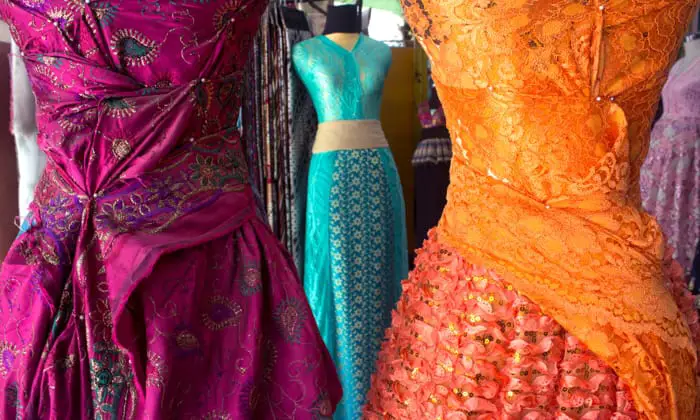
While many countries in South East Asia wear the kebaya, the kebaya is also widely associated with the Malay and Peranakan people of Malaysia.
And hence, the uniform for the air hostesses of the Malaysian Airlines consists of a matching kebaya and skirt.
Kebaya can be made in many materials that vary from lace, cotton or heavier fabrics like brocade. But they are almost-always adorned with prints, embroidery, beading, and/or accessories like brooches.
Modern kebaya feature pastel hues or plainer fronts over the deeper jewelled tones of traditional kebaya.
It is not difficult to find this garment all over Malaysia. You can expect to pay up to RM300 for a full set.
17. Batik
Batik is not exclusive to Malaysia but because of the fact that Islam forbids the use of animals and humans in artful designs, many batik designs will feature flowers and leaves instead.
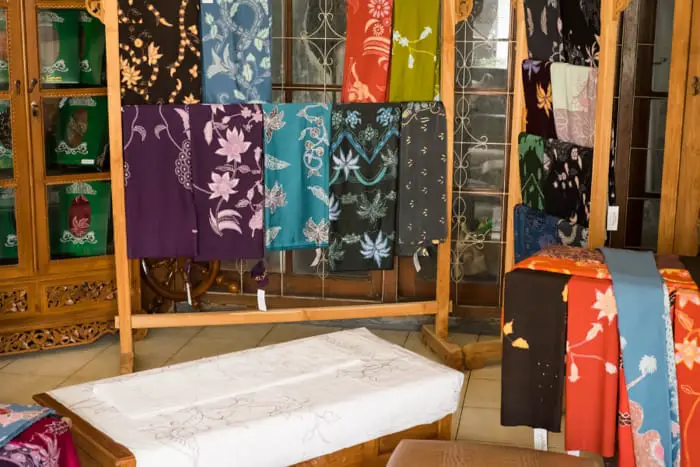
Malaysian batik can differ from Javanese batik in the larger hand-drawn patterns and wider use of brush strokes over the more precision-based canting.
You can see locals wearing batik for both casual outings and dressier events, including business meetings.
The north-east coastal states of Terengganu, Kelantan and Pahang are well-known for their batik. But it will not be hard to find a batik specialty shop in more touristy cities like Kuala Lumpur, Malacca or Penang.
18. Pua Kumbu
Pua kumbu is connected to the Iban tribe of Sarawak. And these intricately woven cotton fabrics use dyes and fibers that are native to the region.
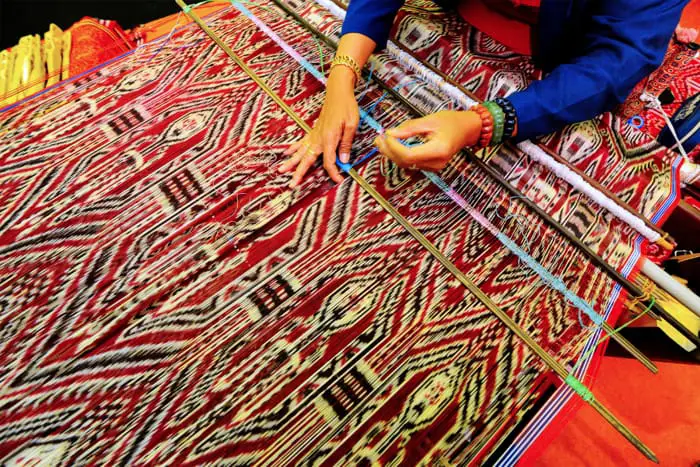
The motifs incorporated into the weavings have spiritual meaning to the Iban community.
If you can find any for sale, expect garments made of these painstakingly handmade cloths to cost at least a few hundred Ringgit.
19. Nutmeg Oil
Nutmeg oil combined with eucalyptus oil or menthol is used as a medicated oil in Malaysia to relieve nausea, bodily aches, sprains, and headaches.
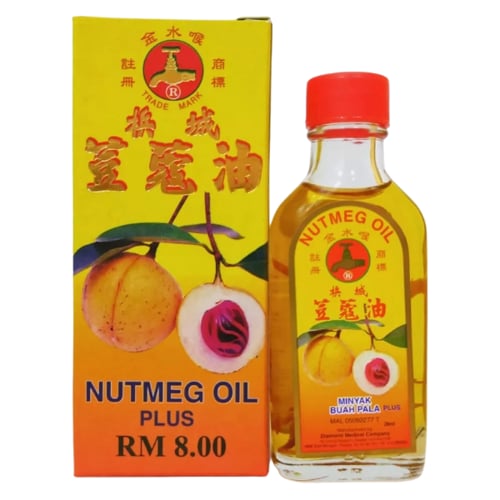
And in Malaysia, Penang is specially famous for nutmeg oil.
Sold in 60ml bottles, local nutmeg oil costs around RM20 to RM35 per bottle. There are sellers on Shopee and Lazada that you can order them from.
20. Woven Goods
For this category, we’re referring to the Penan bags in particular. These originate from indigenous tribes in Borneo.
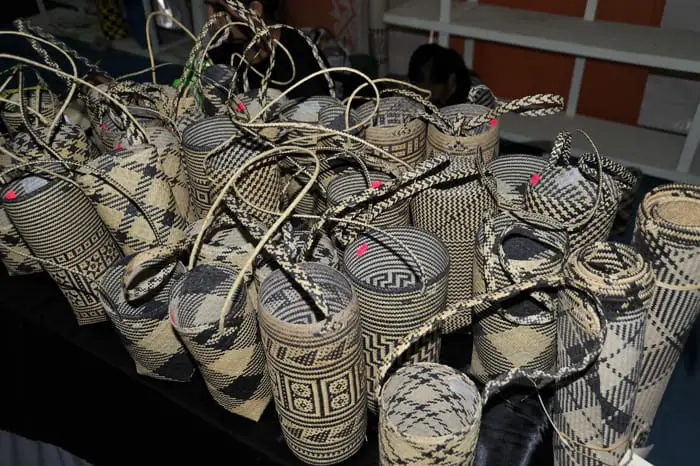
Today, these can also be found in modern styles like hand clutches. Or even as laundry baskets.
We encourage you to get them from Penan Women Project as the profits go towards poor women in Penan villages.
21. Wau Bulan
A colorful wau bulan is not only a national symbol of Malaysia and a local pastime (originating from the state of Kelantan):
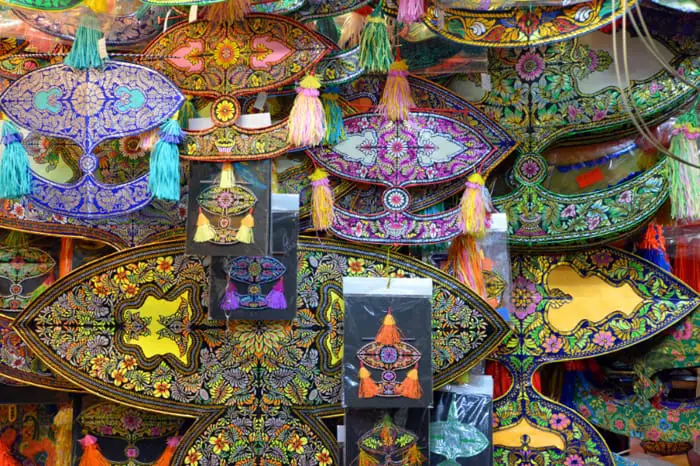
But they will make excellent wall décor because of their peculiar but symmetrical shape and vibrant colors.
Getting one on a plane might be a different story though and so you might have to settle for a wau-shaped keychain or plaque in pewter.
Malaysia Contemporary Souvenirs
A number of crafty Malaysians have created their own brands selling homeware and apparel that are steep in Malaysian roots.
Check out their individual Instagram accounts and you’ll see that they have some very tempting items for sale that will not take up much luggage space!
Here are some of our favorite small businesses:
- Apom – T-shirts, diaries, and mugs with common Malaysian phrases
- Twofrens.co – Hair scrunchies, t-shirts and bags that are hand-dyed naturally
- Kedai Suza – Streetwear, bags and books with loud funky designs by Izzati Suza
- Binka KL – Delicate silkscreen prints of Malaysian scenes and everyday items on totes, bags, tea towels
- PicoWorm – Etsy shop has not been active for a while but she takes on projects
- Knot Just Headbands – Scarves with fun batik block prints
- Salang Design – Iron on patches with strong Malaysian influence
- FERN.gallery – Modern batik wear of conservative styles
- Kanaowear – Urban batik wear
- Loka Made – Cute and colorful prints on stickers, magnets, stationery, and bags
- Chapter Chapter – Custom-made handmade clay jewellry
Conclusion
As you can see, there are many traditional items that can be great Malaysia souvenirs. If these feel a little dated to you, be sure to check out the end section of this post for more wearable styles.
Regardless, we’re sure you’ll find something in this list that’s worth taking the trouble to acquire and bring back home!
Related:

